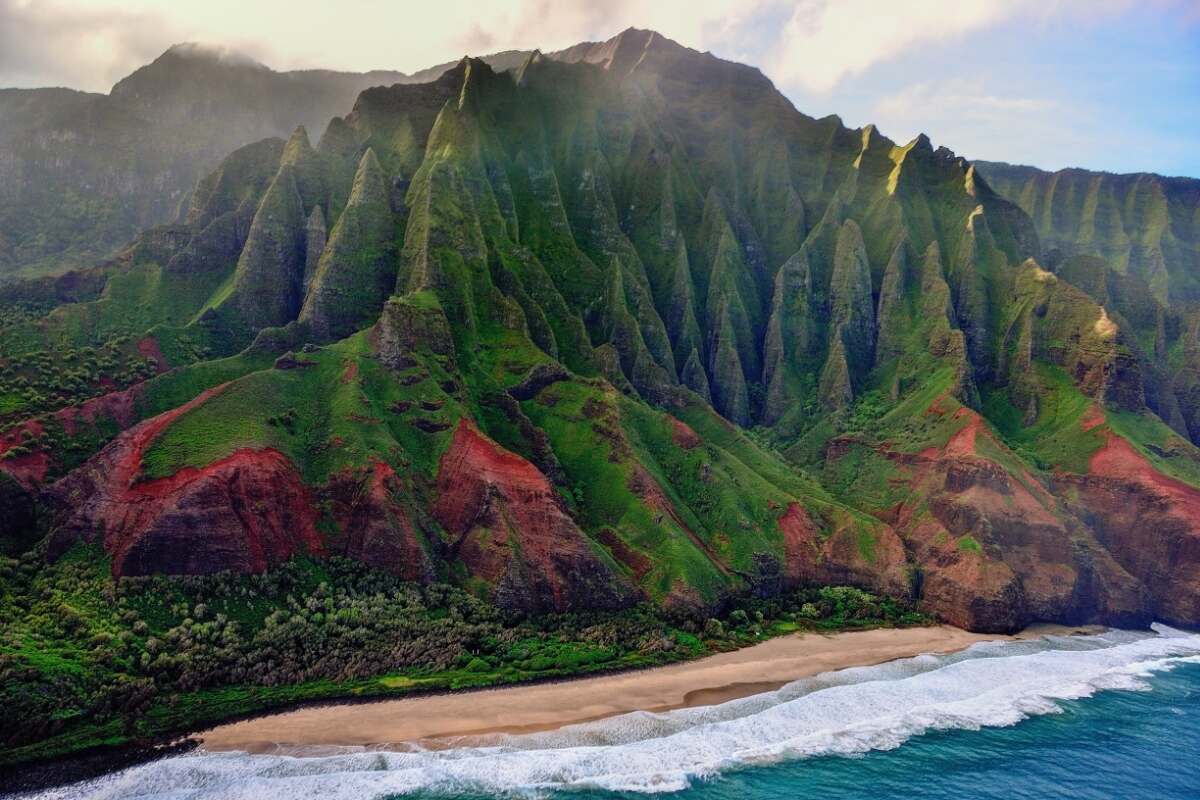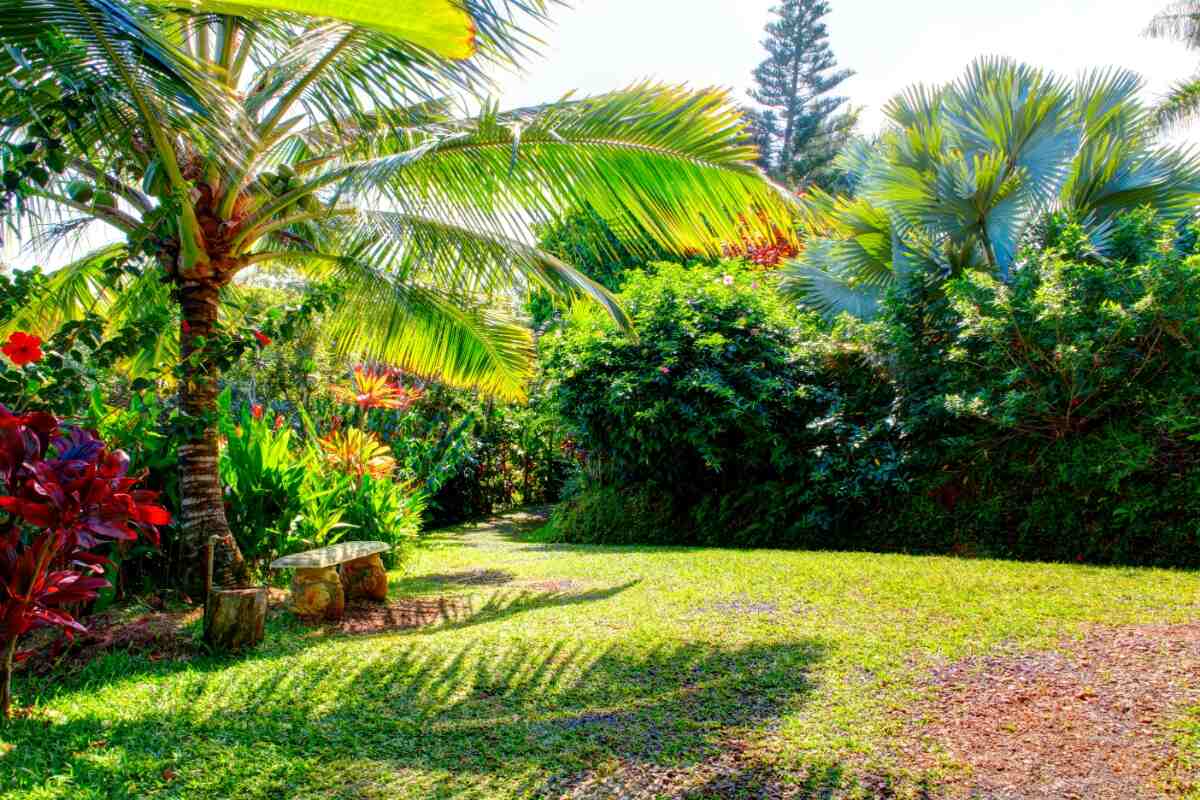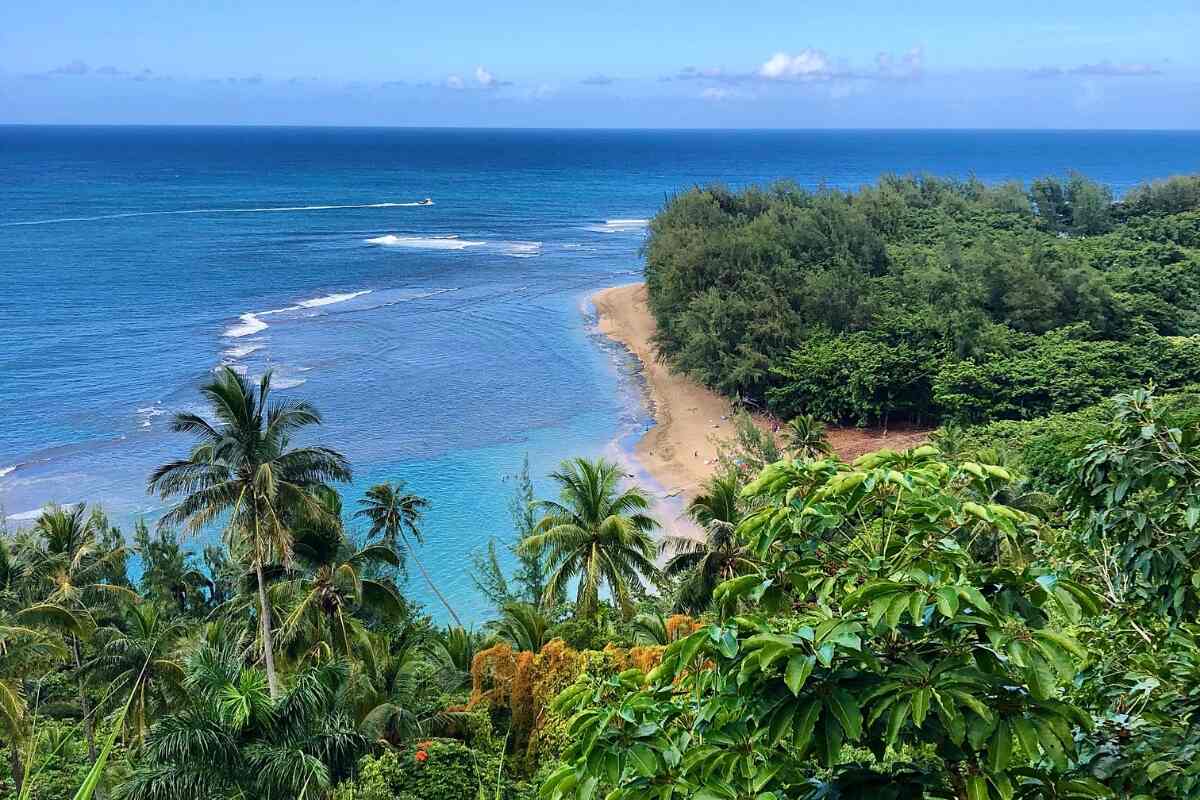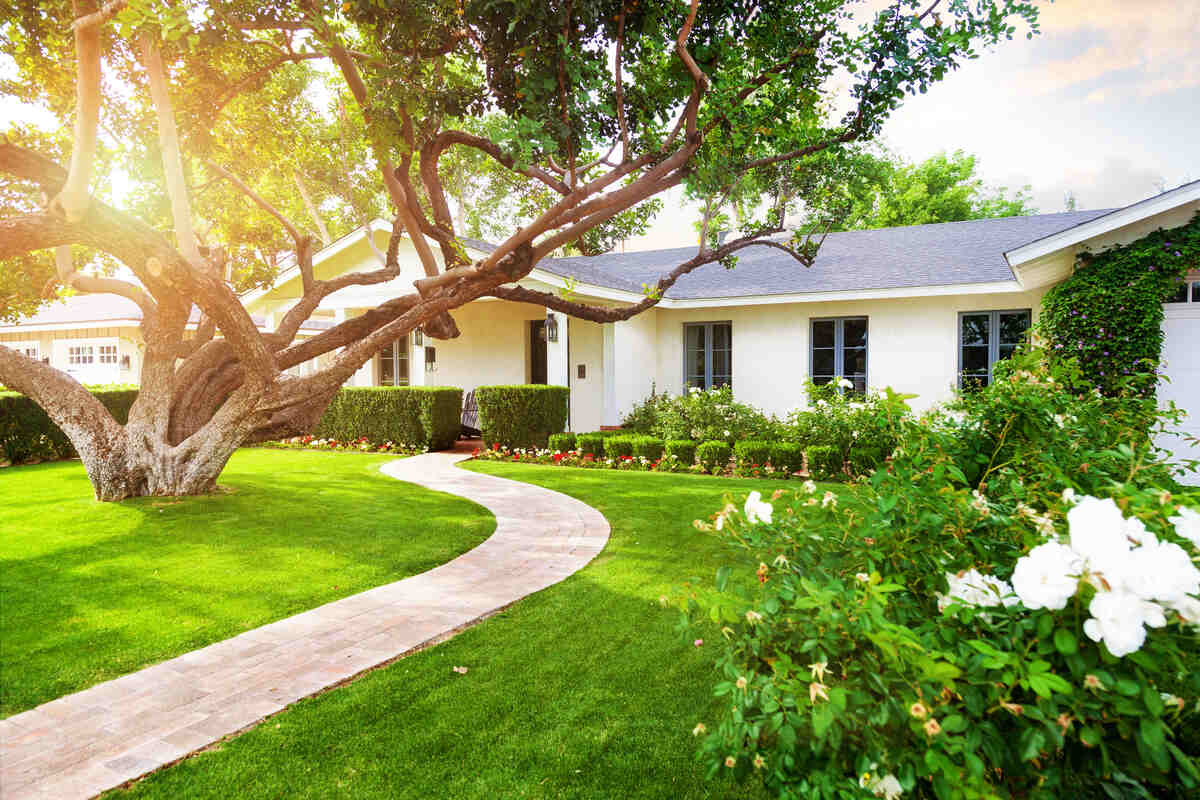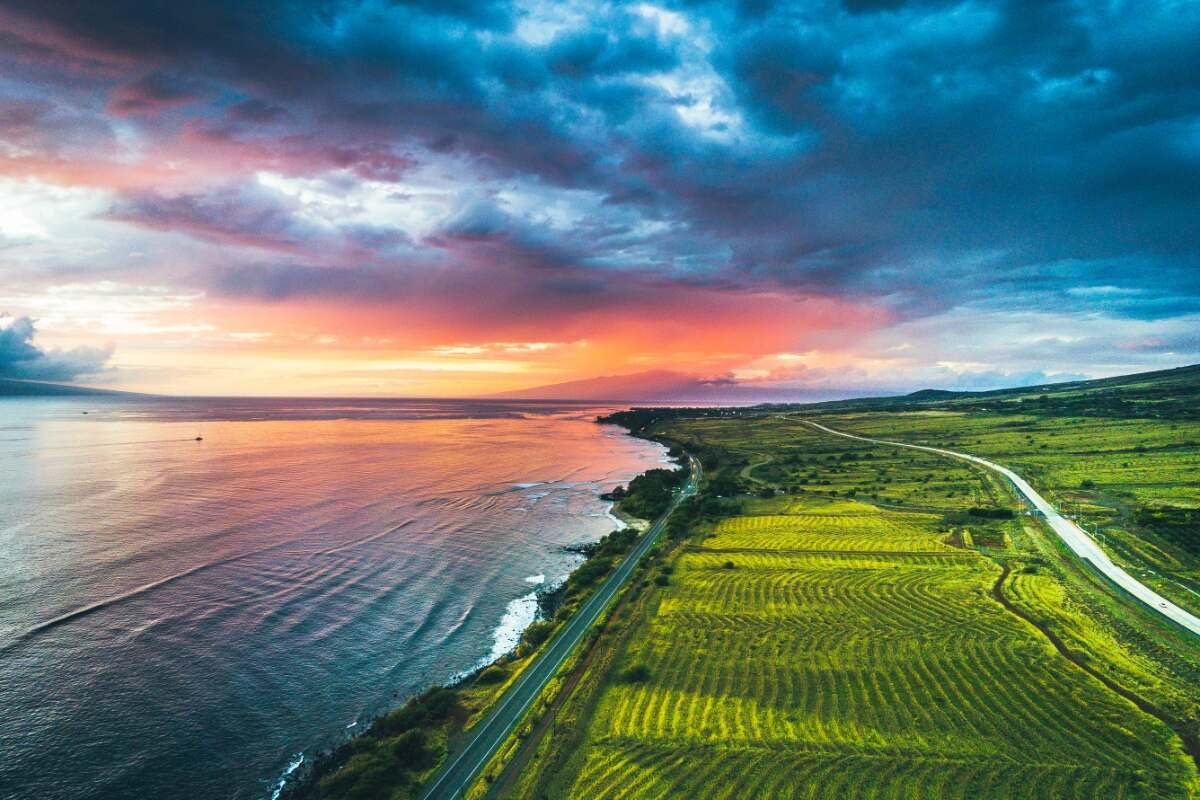
Learning how to grow grass in Hawaii’s climatic puzzle is a unique challenge. From the coastal plains to the top of Mauna Loa, 13,796 feet above sea level, Hawaii covers many different climate types.
Temperatures fall about 3.5°F with every 1,000 feet gained in elevation, so between the coastal cities and the highest mountain town, it’s more than a 10°F difference. Windward parts of the islands are wet, while leeward locations face drought during summer.
Add the various types of soils across the islands and a plethora of imported weeds, and you’ll understand that the secret to growing healthy grass in Hawaii is to become the world’s expert in your own corner of the island.
Worry not. We won’t leave you with this information. Read along and learn the top 9 tips for a healthy lawn in Hawaii, how to choose the right grass, how to plant a new lawn, and more.
9 Tips on How to Grow Healthy Grass in Hawaii’s Climate
With two main seasons – winter and summer – Hawaii seems the easiest place to grow grass. But it has other perks that can ruin a lawn if neglected. Here’s what you need to know to enjoy a lush, green turf with the least possible effort and problems in The Aloha State.
1. Test the Soil Every Two Years
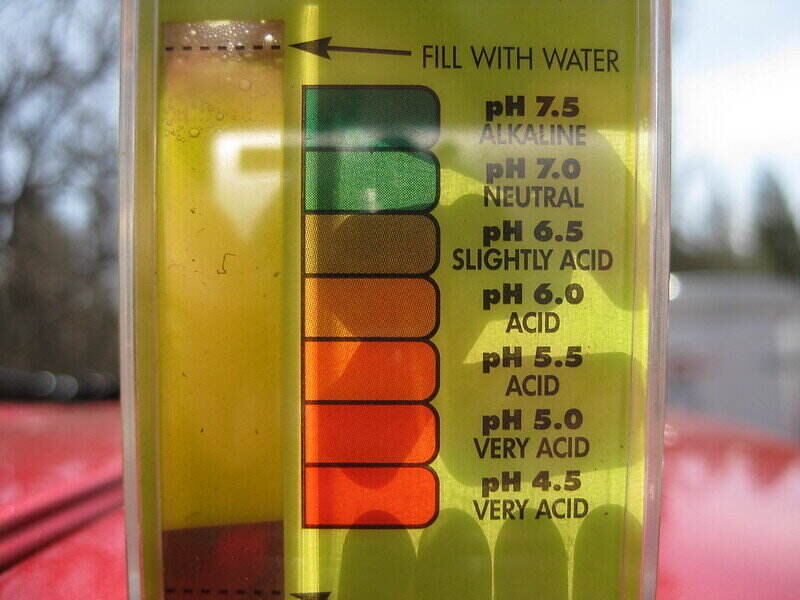
Experts at the University of Hawaii at Manoa say you should test your garden’s soil at least once every two years. And here’s why:
- Sloped terrain and generous rainfall lead to nutrients leaching from the soil.
- Most Hawaiian soil is acidic, but the pH ranges from 4 to 9 across the islands, so alkaline soil is also present.
- Soils vary widely across the islands, and knowing what you have is always best.
Hilo soil, the official state soil of Hawaii, is a fertile, well-drained volcanic loam with a high water-holding capacity. But it covers only a small portion of the islands, with various other soil types spread across the land. In some places, the topsoil is just a thin, young, poor soil crust over lava flows.
The best way to find out what your garden soil offers is to test it. Collect soil samples and send them to the nearest Cooperative Extension Office. Basic soil analysis costs only $12, giving you valuable information about the following:
- Soil pH and how to treat it with lime or sulfur. Turfgrass grows best in soil with a pH of 6.5 to 7.0. Acidic soil prevents the absorption of nitrogen, potassium, and magnesium and exposes the grass to toxic amounts of aluminum and manganese in the soil. You can correct it with lime. Alkaline soil, over 7.0, limits iron absorption and leads to grass chlorosis. Treat it with sulfur.
- Deficiencies in the main plant nutrients: phosphorus, potassium, magnesium, calcium, and nitrogen. Hilo soil has a high capacity to fix phosphorus, making it less available to plants. Most often, you’ll need to add extra phosphorus as fertilizer if you have Hilo soil.
2. Aerate Periodically to Improve Drainage
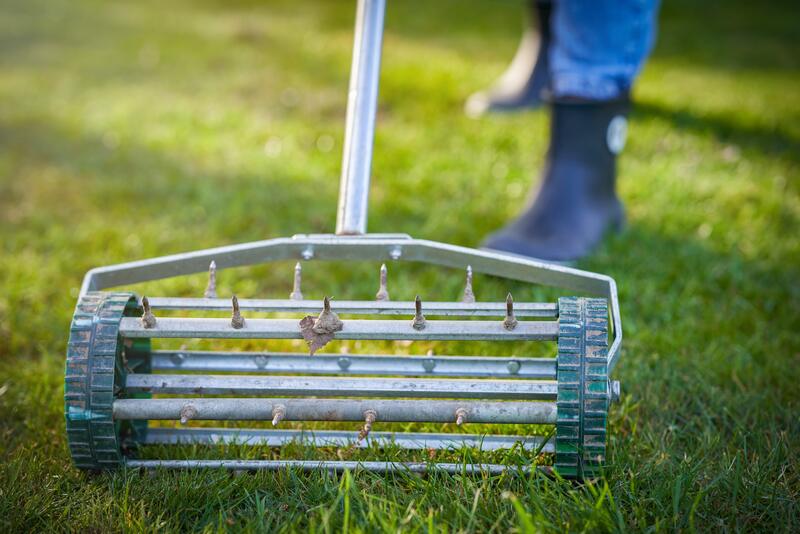
In Hawaii’s humid tropical climate, compacted soil with poor drainage exposes the turfgrass to fungal diseases like root rot.
To keep the grass healthy, improve soil drainage by aerating the lawn. Do this once a year with sandy soil in your backyard and more often if your lawn grows on clay soil.
Use a core or spike aerator. Both leave behind a network of small holes that help the water, air, and nutrients travel easier through the soil.
Where to buy a lawn aerator:
When is the best time to aerate? At the beginning of the grass’s growing season. It’s when damaged roots, stems, or leaves recover easily, and the turf benefits the most from the loosened soil.
Hawaii’s lawns have mostly warm-season turfgrasses such as Bermudagrass, Zoysiagrass, centipedegrass, seashore paspalum, and St. Augustinegrass. Their growing season begins in late spring or early summer, depending on the elevation.
3. Leave Grass Clippings on the Lawn
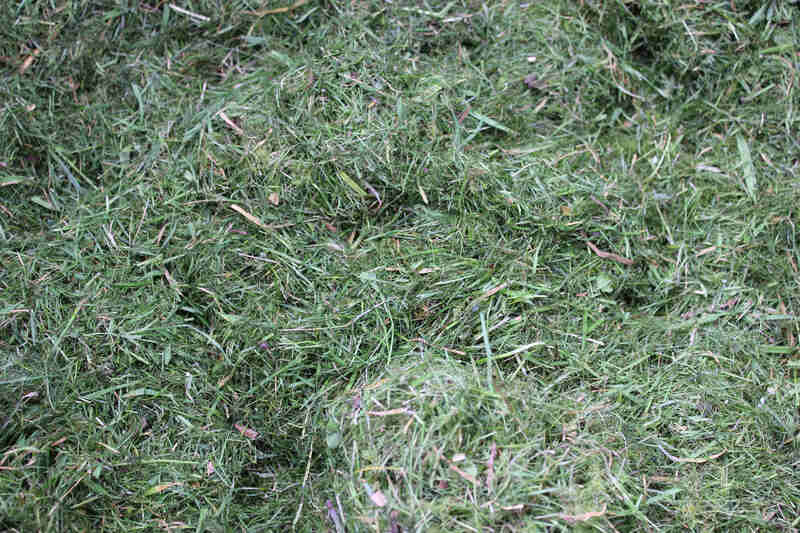
Grass clippings are rich in nitrogen and micronutrients released slowly into the soil. Mow the lawn periodically, cutting only up to ⅓ of the grass length, and leave the clippings on the soil.
They decompose fast enough to avoid creating a nuisance thatch layer and limit the use of synthetic fertilizers. If you frequently postpone mowing the lawn and your grass clippings tend to be long, invest in a mulching mower (or replace the grass with a no-mow low-maintenance ground cover).
Shop mulching mowers online:
4. Use Slow-Release Fertilizer
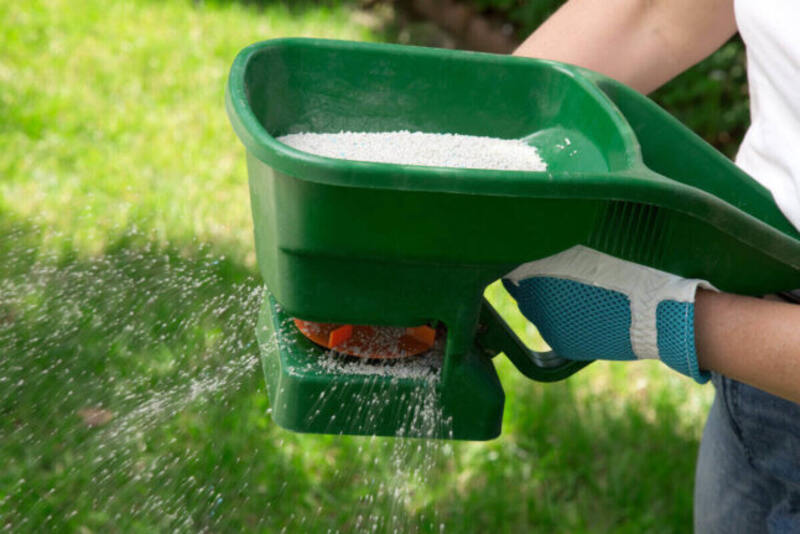
A slow-release fertilizer allows the grass to absorb the most nutrients possible and limits toxic leaching into natural bodies of water. Apply fertilizer every 2 to 3 months during the turf growing season in Hawaii, May to October.
To protect the environment, consider an organic lawn fertilizer like manure, fish meal, or corn gluten meal. Organic options also help improve the soil texture long-term and add precious micronutrients.
Shop organic fertilizers online:
5. Water the Grass Only When Needed
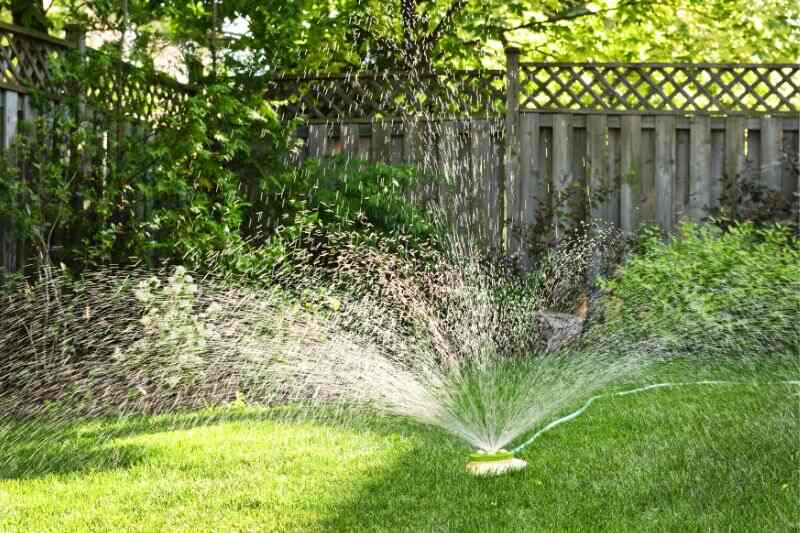
Rainfall varies drastically across the Hawaiian islands. Mount Waialeale in Kauai is one of the wettest spots on earth, with about 450 inches of rainfall yearly. Meantime, the driest island, Kawaihae, gets only 9 inches yearly.
Windward lands are wet, while leeward ones are dry, so there’s no general rule in Hawaii regarding irrigating the lawn besides one – water when needed.
Bermuda, Zoysia, and buffalograss have excellent drought tolerance and handle dry weather better than overly wet soil. Only irrigate when you see these signs of drought stress in your grass:
- Pale-green, greyish color.
- About ⅓ to ½ of the grass is wilted.
- If you walk on the lawn, the grass you stepped on springs back up slower than usual.
Pro tips for watering the lawn in Hawaii:
- Irrigate early in the morning to avoid the midday heat.
- Avoid watering the lawn in the evening. Leaves that stay wet during the night are more prone to fungal diseases.
6. Leach with Fresh Water to Wash Out Excessive Salt
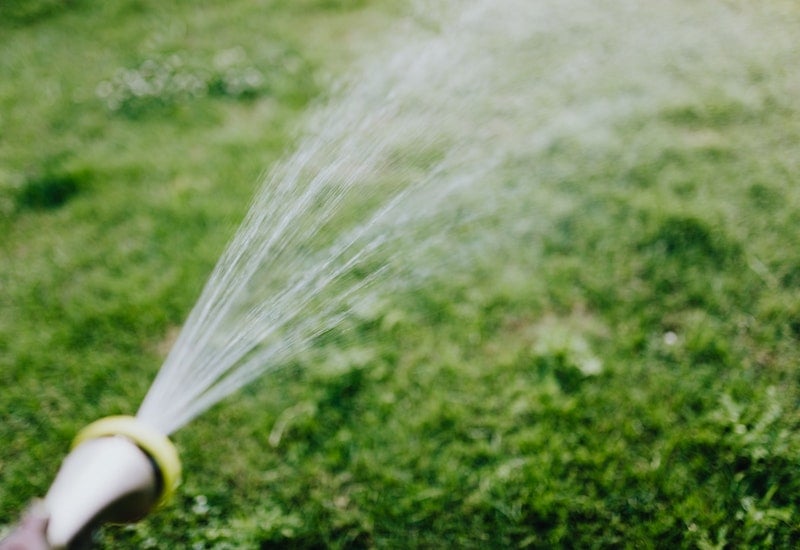
Warm-season grasses like seashore paspalum or St. Augustine, common on Hawaii lawns, have good salt resilience.
But even they might need soil leaching with fresh water occasionally, especially if you live in an area with shallow water tables rich in salt or you typically irrigate with brackish water.
From time to time, give your lawn a good rinse using fresh water.
7. Mow at the Correct Height
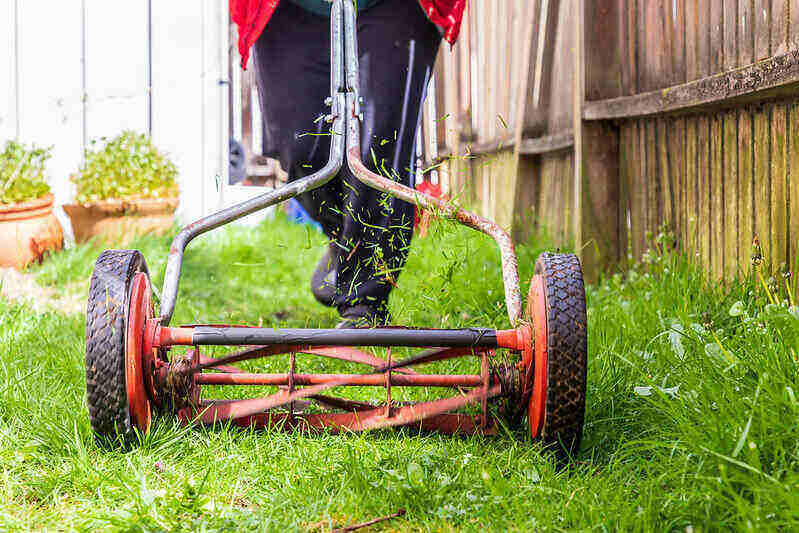
The gorgeous islands of Hawaii enjoy a dreamy tropical climate, with mild summers and winters most tourists consider the best in the world.
Warm-season grasses slow their growth in Hawaii’s mild winters but don’t enter full dormancy except at high elevations. This means you’re mowing the lawn almost year-round.
Grass correctly mowed is healthier, sturdier, and more resilient to drought, full sun, heat, and diseases. Here are the recommended cutting heights that keep your lawn thriving:
| Type of Grass | Mowing Height |
| Bermudagrass | 0.5 to 2.5 inches |
| Carpetgrass | 1 to 2 inches |
| Centipedegrass | 1 to 2 inches |
| St. Augustine | 3.5 to 4 inches |
| Zoysiagrass | 1 to 2 inches |
| Seashore Paspalum | 1 to 2 inches |
A good rule of thumb is to cut the grass taller in stressful conditions, such as prolonged drought and heat during the summer (May to October). Taller plants grow deeper roots and shade the soil, limiting water evaporation.
Another challenge for Hawaiian lawns is the humid winter, when tall grass fosters fungal diseases such as root rot and take-all patch. Consider mowing the lawn at the lower end of the recommended interval from November to April. This way, you improve air circulation among the blades of grass and expose the soil to sunlight, keeping fungi away.
8. Use the One-Third Rule of Mowing
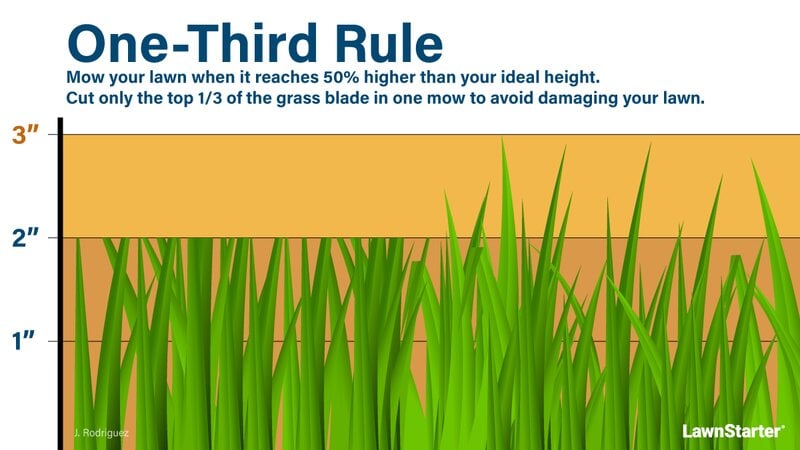
Cutting less than ⅓ of the grass length every time you mow leaves the plant with enough resources to heal fast and keep its health. Adjust your mowing frequency to keep this rule while maintaining the grass at the proper height.
9. Keep Weeds Under Control
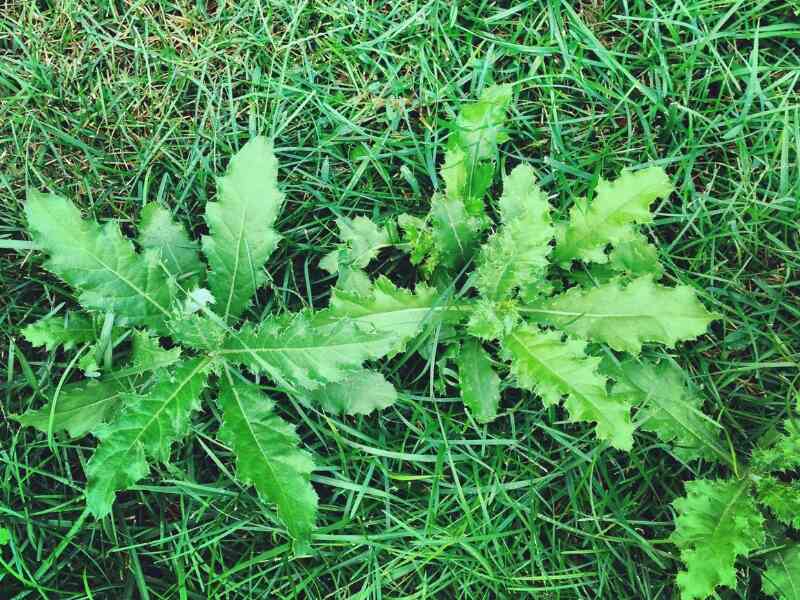
Hawaii’s climate encourages various weeds to grow and invade forests, pastures, gardens, and lawns. From the common crabgrass and dandelions present across the United States to tropical Hilo grass, juniper berry, fireweed, and ivy gourd, you’ve got your work cut out for you.
Since most weeds spread rather easily and fast, it’s essential to keep an eye on your lawn and surroundings (vegetable garden, flower beds, orchard, wildlife habitats) and act fast.
Hand pulling works well with young, isolated weeds. Pre-emergent and post-emergent herbicides are good options for broadleaf and grassy weeds trying to set in your garden. But, always contact professionals for large infestations or to get rid of mature noxious shrubs or trees.
How to Choose the Right Type of Grass for Hawaii Lawns
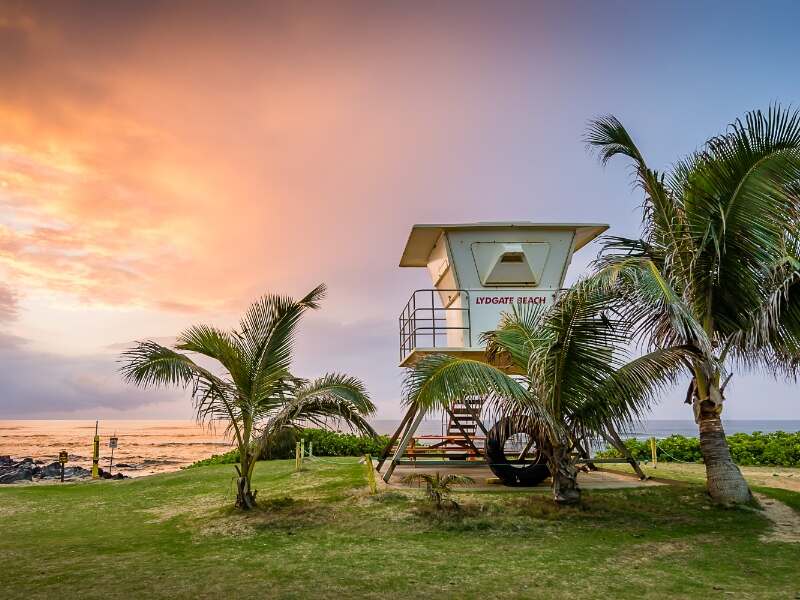
The first step in keeping a healthy lawn is to choose the right type of grass for your location. The most common turfgrasses homeowners grow in Oahu, Hawaii, Maui, Kauai, Molokai, Lanai, Nihau, and Kaholawe are warm-season species. You can plant cool-season turf like tall fescue, Kentucky bluegrass, or ryegrass you’ll enjoy them just 2 to 3 months a year since the climate is too warm for their type.
Here are the best grass types for Hawaii lawns.
Bermudagrass:
- Beautiful dark green foliage with fine blades, soft to the touch, pleasant to walk on.
- High tolerance to drought and wear due to its spreading stolons that quickly cover any damaged or bald spots.
- Suitable for high-traffic garden zones.
- Fast to establish and grow but needs lots of regular maintenance.
- Resilient grass with gorgeous looks – a good option for residential lawns, sports fields, and golf courses.
Zoysiagrass:
- Slow to establish.
- Grows dense, spreading through rhizomes, and keeps weeds at bay once established.
- Good heat, drought, and wear tolerance.
- Tolerant of salt spray.
- It withstands moderate traffic on home lawns.
- You can plant it in partial shade.
- The most popular cultivars in Hawaii are El Toro Zoysia, Mayer, Zeon, and Palisades.
St. Augustinegrass:
- Best shade tolerance among all five. It’s the top turfgrass for gardens with shade trees and dense shrubs.
- Good tolerance to salt spray, suitable for coastal properties.
- Less suitable for heavy traffic.
- Beautiful dark, mint-like green color.
Seashore paspalum:
- A turfgrass with dense growth, less vulnerable to weeds.
- It has excellent salt spray tolerance, perfect for coastal properties.
- Needs direct sun exposure to thrive.
- Comes with moderate foot traffic tolerance.
Centipedegrass:
- A slow-growing grass and the most low-maintenance turfgrass for Hawaii lawns.
- Low fertilizer requirements.
- It’s more suitable for inland properties due to its low tolerance for salt spray.
How to Plant a New Lawn in Hawaii
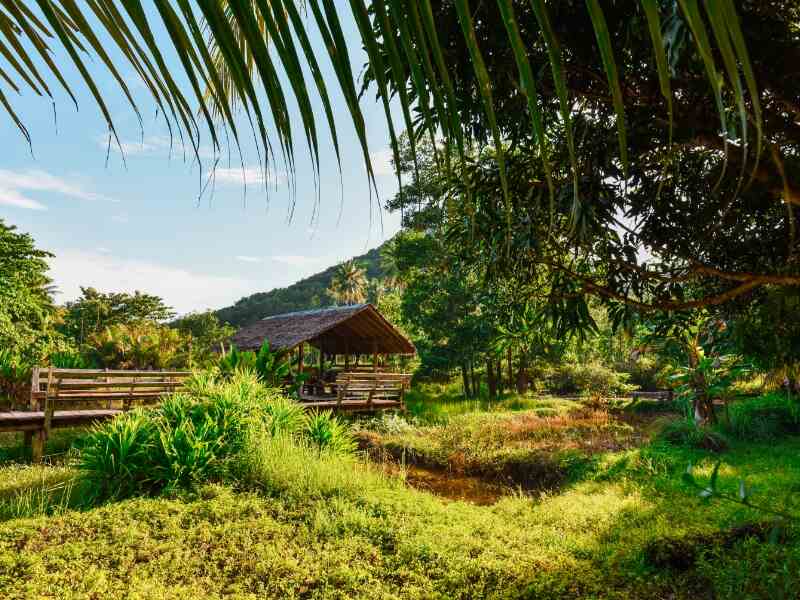
The best time to plant a new lawn in Hawaii, either from sod or seed, is during the wet season, from November until March. It’s when the grass has plenty of water to put down healthy roots and gather strength for the summer heat.
Here are the steps to follow for planting a healthy lawn:
Step 1: Remove Weeds and Old Turfgrass
This first stage cleans up the yard and prepares it for a new lawn. Spray a non-selective post-emergent herbicide over the entire area to eliminate all weeds and old grass. Roundup is a common option to use.
Where to buy Roundup:
While in the soil, the herbicide also attacks any new growth, including sod or grass seedlings. Wait at least a month after the application before installing sod or spreading seeds (see the herbicide’s recommended waiting period on the product package). Patience is essential to get good results.
Step 2: Loosen and Amend the Soil
Rake the yard, remove all the dead vegetation, and loosen the soil with a tiller. Tilling helps roots stretch deeper into the ground with less effort and improves drainage. Use the rake again to collect any dead roots you dig out with the tiller and level the surface.
Where to buy or rent a tiller:
Once the soil is leveled, spread 1 inch of good quality compost to improve topsoil. Use homemade if you’re composting and have enough, or buy some from your local garden supply store.
Adding compost improves soil drainage and gives the sod a rich, loose topsoil layer to dig the roots in. Level the surface with a rake and pass once with a roller to help the soil settle down.
Step 3: Install the Sod or Spread Grass Seed
Both options give good results. Sod is more expensive, and you might need a professional touch to fit the lawn perfectly. On the other hand, you’ll have it green and thriving in no time.
Grass seeding is easier DIY and less expensive, but you’ll have to wait a few weeks for seeds to germinate and the turf to grow tall enough to call it a lawn.
Installing Sod
- Place the sod pieces in a checkerboard pattern on the lawn area.
- Push them close together to close any gaps in between.
- Water it down softly.
- Pass a sod roller over it to help the roots contact the topsoil.
- Learn more here: How to Lay Sod
Planting Grass Seeds
To spread the seeds uniformly, you need a broadcast spreader. Here’s how to use it correctly:
- Fill it with half the amount of seeds you want to use.
- Spread across the entire lawn, going back and forth in parallel lines.
- When you’ve covered the entire area, put in the second half and go at it again.
- This time, walk perpendicularly to the first direction of the application.
- Learn more here: How to Plant Grass Seed
While it takes a bit more to do it like this, it ensures uniform spreading, and you avoid bald spots or areas with overly thick lawn grass.
If DIY lawn installation is not your thing, contact a local lawn care company for a professional installation. They can take care of each of the steps we mentioned above.
Step 4: Irrigate the New Lawn
To ensure seed germination or healthy, deep roots for sod, water the lawn twice or thrice daily for about three weeks. Set the sprinkler system to a low setting. You don’t want to soak the lawn. What you’re aiming for is moist soil. Stop watering if it rains.
FAQ About How to Grow Grass in Hawaii
Warm-season grasses grow best in Hawaii’s tropical climate. The most common types of turf are Bermudagrass, Zoysiagrass, centipede, St. Augustine, and seashore paspalum.
Hawaii has some amazing low-maintenance ground covers that can easily replace the traditional lawn. Ilima papa, golden glory, red ivy, and hinahina are just a few of them. They are more resilient than turf and need much less maintenance.
Hawaii’s tropical climate welcomes many imported species. Those who thrive often become invasive. The most common weeds in Hawaii’s lawns, gardens, pastures, and forests are ivy gourd, Guinea grass, hilahila, and fireweed.
Grow the Healthiest, Greenest Lawn in Hawaii
A haven for tourists and weeds, Hawaii can be challenging for growing healthy lawn grass. From high humidity and fungal diseases to salt spray and drought, your lawn has many challenges to overcome.
Fortunately, you can hire lawn care professionals to solve all your lawn problems in a jiffy. It doesn’t matter if you’re in Honolulu or the other side of the archipelago. LawnStarter has a local expert to help you grow Hawaii’s healthiest, greenest lawn!
Main Photo Credit: insta_kenya / Canva Pro / License
LawnStarter participates in the Amazon Services LLC Associates Program, an affiliate advertising program. LawnStarter may earn revenue from products promoted in this article.
